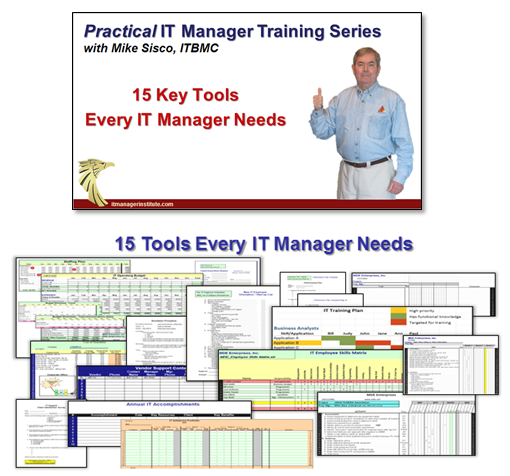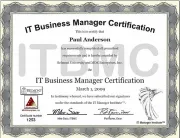I get this question quite a bit, “How do I overcome our poor IT reputation in our company?”
“Rome was not built in a day.”, they say. To turn a poor situation around takes focus, commitment, hard work, , , and time. If you have a bad situation, it didn’t get into this state of affairs over night. Neither will it be fixed over night.
Start by identifying the key problems that’s leading to client dis-satisfaction. I use the word ‘client’ for both internal managers and employees who use technology as well as external clients who pay you for services (if you have them).
Once you know what your problems are, determine what it takes to fix them or to eliminate what causes them. It may be organizational focus, possibly managing expectations better, or even eliminating some things that you are trying to do because it’s either not that important or the IT organization isn’t up to the task.
It is always critical that you manage the delivery of your services to match up with both your IT organization’s capabilities as well as capacity. Signing up for something when you don’t have one of these two elements is pure suicide so if you have such a situation, get it fixed promptly.
Unlike what you may feel, your clients really do want you to succeed. They will typically always push you for more than what you can do, and you can either sign up for too much and fail, , , or sign up for an appropriate level of service, deliver consistently, and succeed, , , every time!!
Keys to improving your client satisfaction levels:
- Back off of unrealistic commitments and re-establish what you can do.
- Always quantify what you can do and can’t.
- Build some buffer into your commitments (surprises do happen in the IT world so plan for them)
- Coach your staff to over communicate.
- Be aggressive in follow-up and calling back.
- Strive to keep your client informed; never leave the client in the dark.
- Don’t commit to deadlines unless you can deliver and if you commit, you had better make it happen.
It’s important for you to position your IT organization to over deliver. No one gets upset if you complete projects faster than expected or at less cost than expected. Someone always gets concerned if you are late or over budget, , , so position yourself to deliver “better than expected”, and see what a difference it makes.
 Clients want results and need you to do what you say you will do, and they want you to be consistent in this area. Most clients are more forgiving than you might think, but when you lose their confidence it’s all over.
Clients want results and need you to do what you say you will do, and they want you to be consistent in this area. Most clients are more forgiving than you might think, but when you lose their confidence it’s all over.
Do these things with a positive mindset to improve your IT support delivery, and you will start turning your situation around.




























